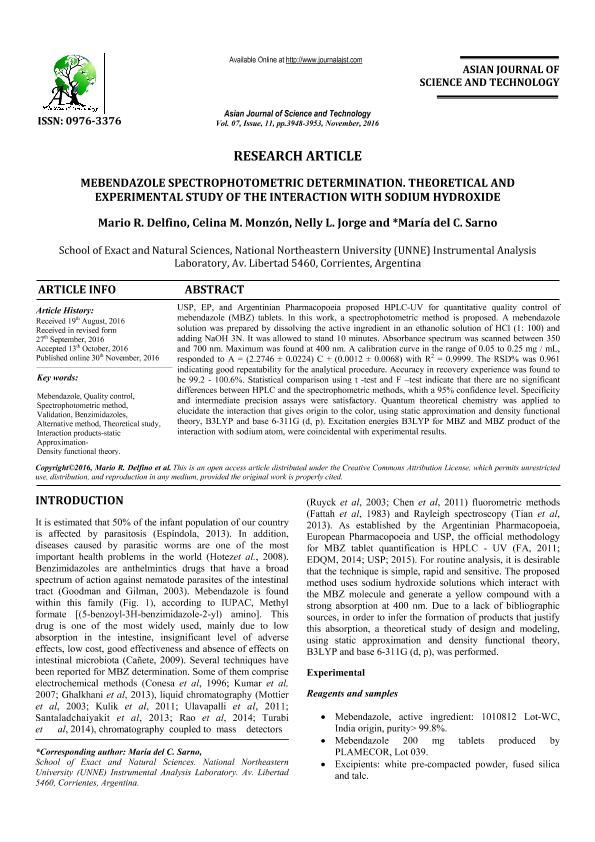Artículo
Mebendazole spectrophotometric determination: theorical and experimental study of the interaction with sodium hydroxide
Fecha de publicación:
11/2016
Editorial:
AJST
Revista:
Asian Journal of Science and Technology
ISSN:
0976-3376
Idioma:
Inglés
Tipo de recurso:
Artículo publicado
Clasificación temática:
Resumen
USP, EP, and Argentinian Pharmacopoeia proposed HPLC-UV for quantitative quality control of mebendazole (MBZ) tablets. In this work, a spectrophotometric method is proposed. A mebendazole solution was prepared by dissolving the active ingredient in an ethanolic solution of HCl (1: 100) and adding NaOH 3N. It was allowed to stand 10 minutes. Absorbance spectrum was scanned between 350 and 700 nm. Maximum was found at 400 nm. A calibration curve in the range of 0.05 to 0.25 mg / mL, responded to A = (2.2746 ± 0.0224) C + (0.0012 ± 0.0068) with R2 = 0.9999. The RSD% was 0.961 indicating good repeatability for the analytical procedure. Accuracy in recovery experience was found to be 99.2 - 100.6%. Statistical comparison using t -test and F ?test indicate that there are no significant differences between HPLC and the spectrophometric methods, whith a 95% confidence level. Specificity and intermediate precision assays were satisfactory. Quantum theoretical chemistry was applied to elucidate the interaction that gives origin to the color, using static approximation and density functional theory, B3LYP and base 6-311G (d, p). Excitation energies B3LYP for MBZ and MBZ product of the interaction with sodium atom, were coincidental with experimental results.
Archivos asociados
Licencia
Identificadores
Colecciones
Articulos(CCT - NORDESTE)
Articulos de CTRO.CIENTIFICO TECNOL.CONICET - NORDESTE
Articulos de CTRO.CIENTIFICO TECNOL.CONICET - NORDESTE
Citación
Delfino, Mario Raul; Monzón, Celina María; Jorge, Nelly Lidia; Sarno, María del Carmen Teresa; Mebendazole spectrophotometric determination: theorical and experimental study of the interaction with sodium hydroxide; AJST; Asian Journal of Science and Technology; 7; 11; 11-2016; 3948-3953
Compartir




